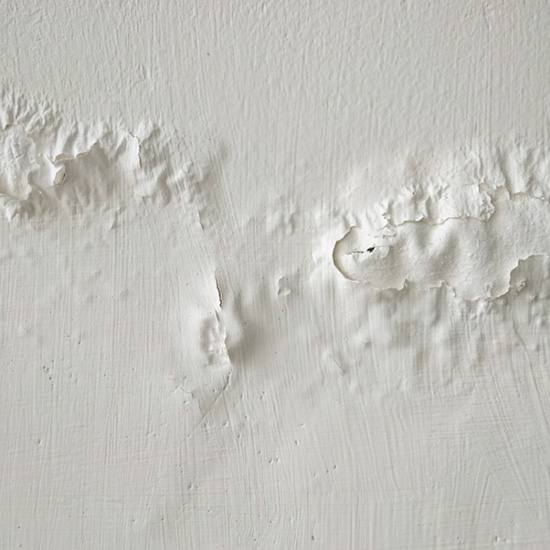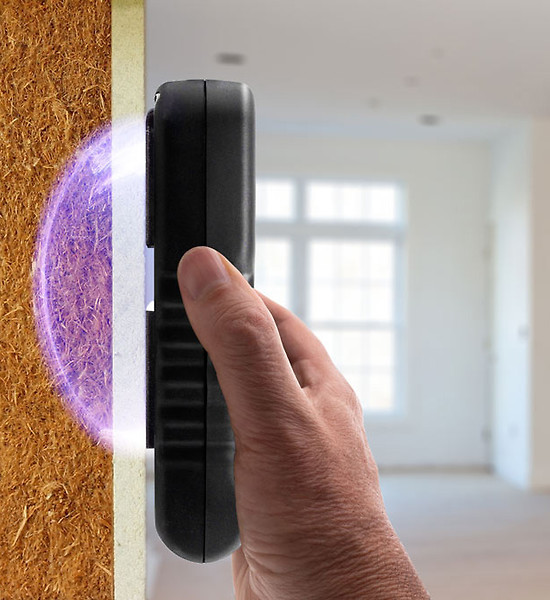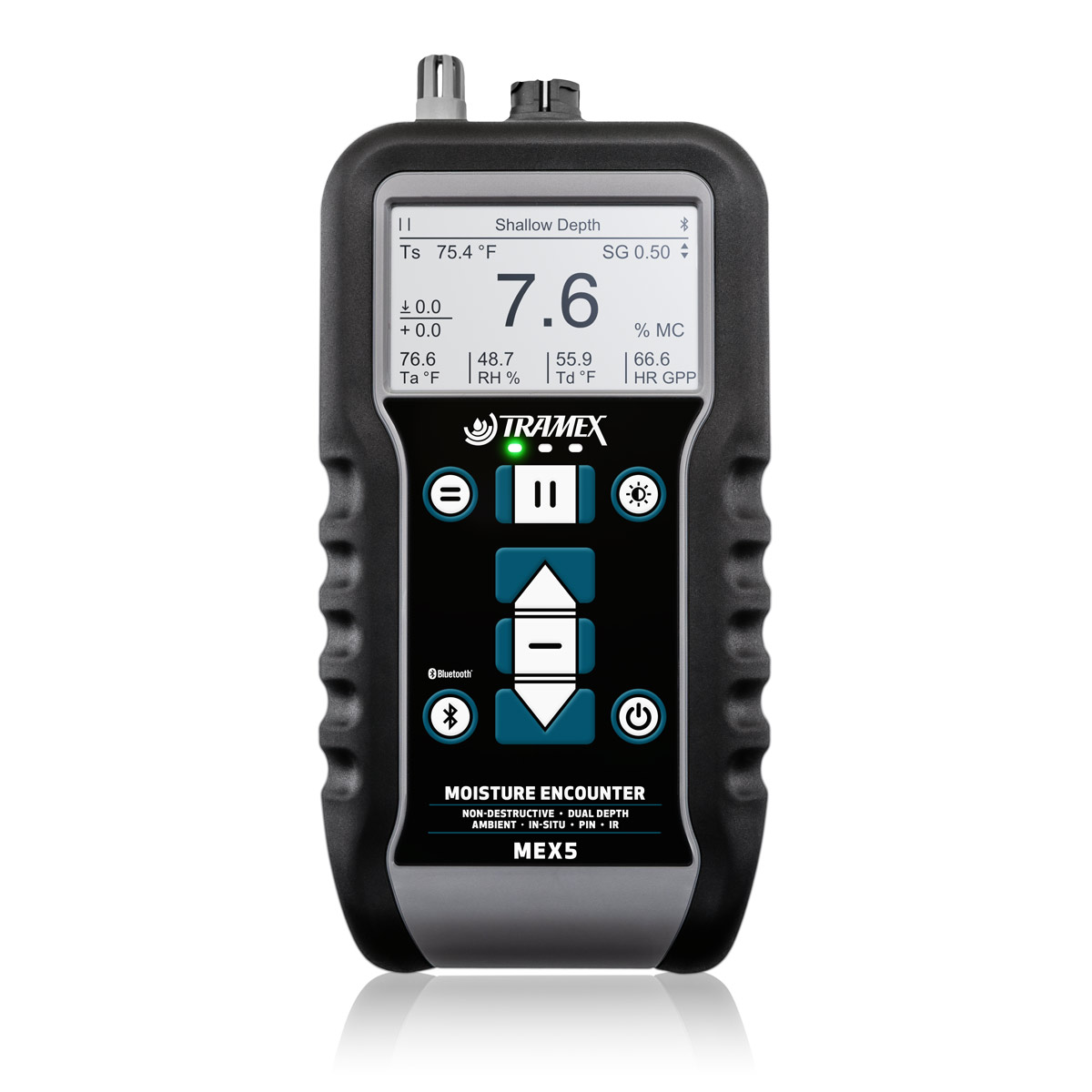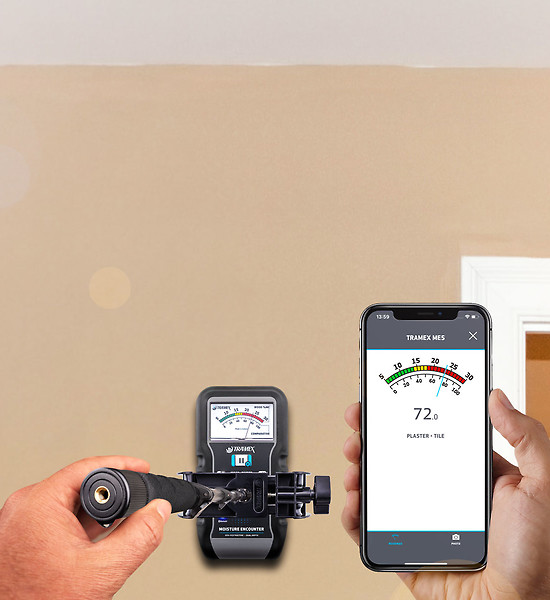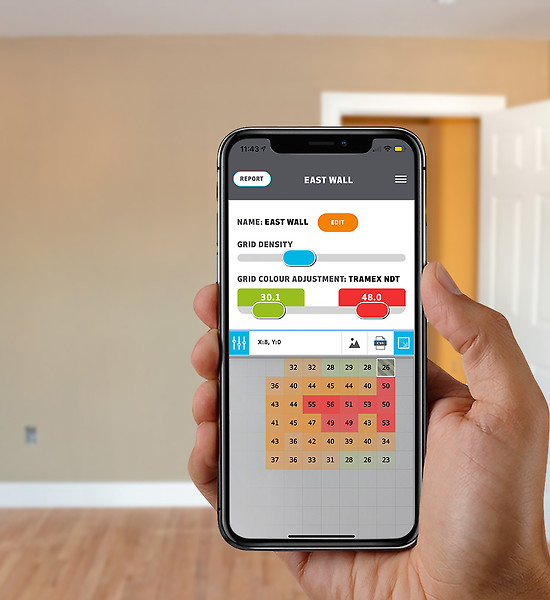How to detect moisture behind walls?
Moisture within and behind walls can be detected with a pinless moisture meter. A non-destructive moisture meter can accurately locate and measure elevated moisture levels without the need to break the wall’s surface material.
Dual depth moisture meters, such as the MEX5 and ME5, allow the user to compare moisture levels within and behind a wall covering. The shallow-depth readings, up to 10mm (⅜”), and deep-depth readings, up to 30mm (1¼"), can be used to compare surface moisture and core moisture and eliminate the influence of the substrate when testing coverings. It can also help determine whether a moisture issue is located deeper within a structure.
Further in-situ investigation can then be carried out when necessary with insulated pins and RH probes for moisture measurement at depth. This can be done with the Moisture Encounter MEX5 which incorporates a plug-in port for pin-type probes which can be used to verify elevated moisture levels.
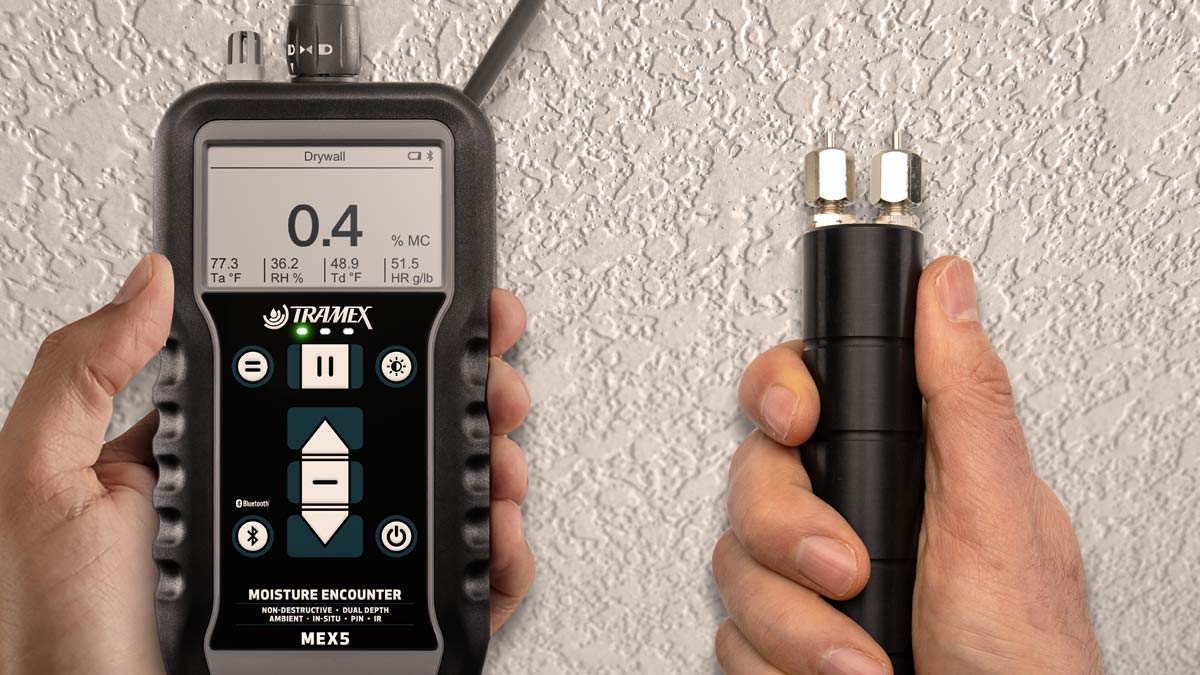
In addition to evaluating moisture, pinless moisture testing is also suitable for tracing and mapping the extent of a moisture issue within a wall structure, without puncturing the exterior surface. The scale of a moisture problem can be visualized with the use of moisture maps.

